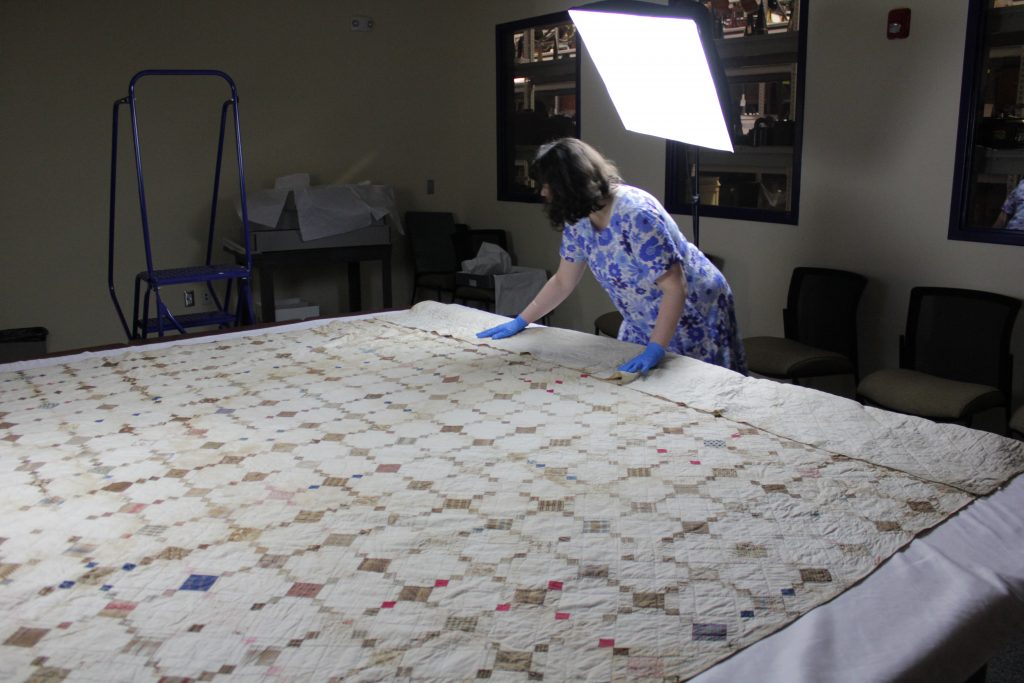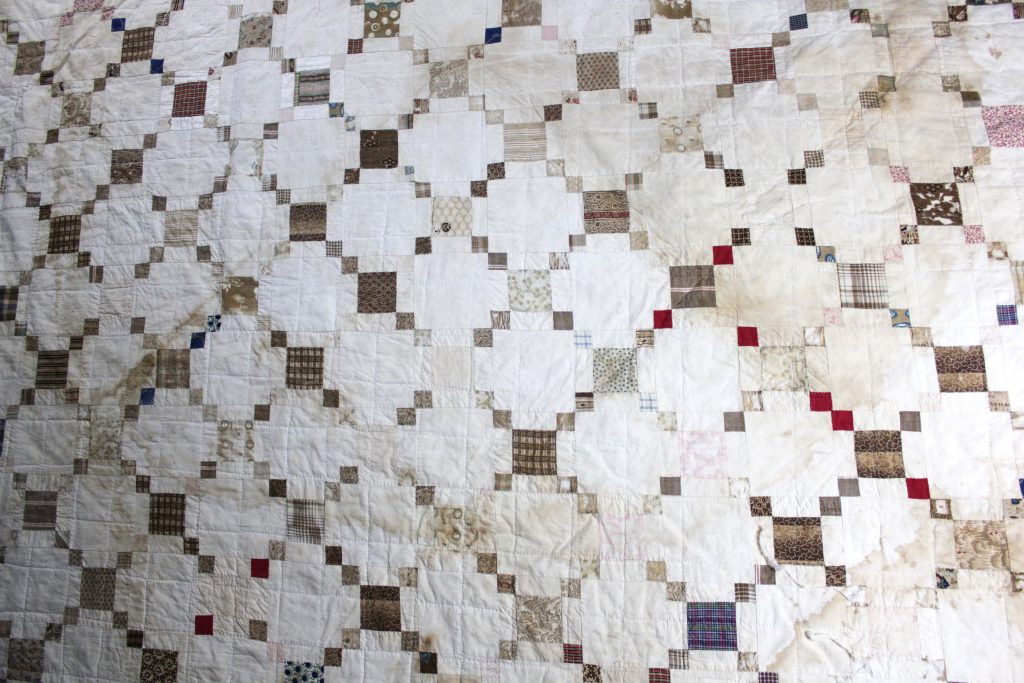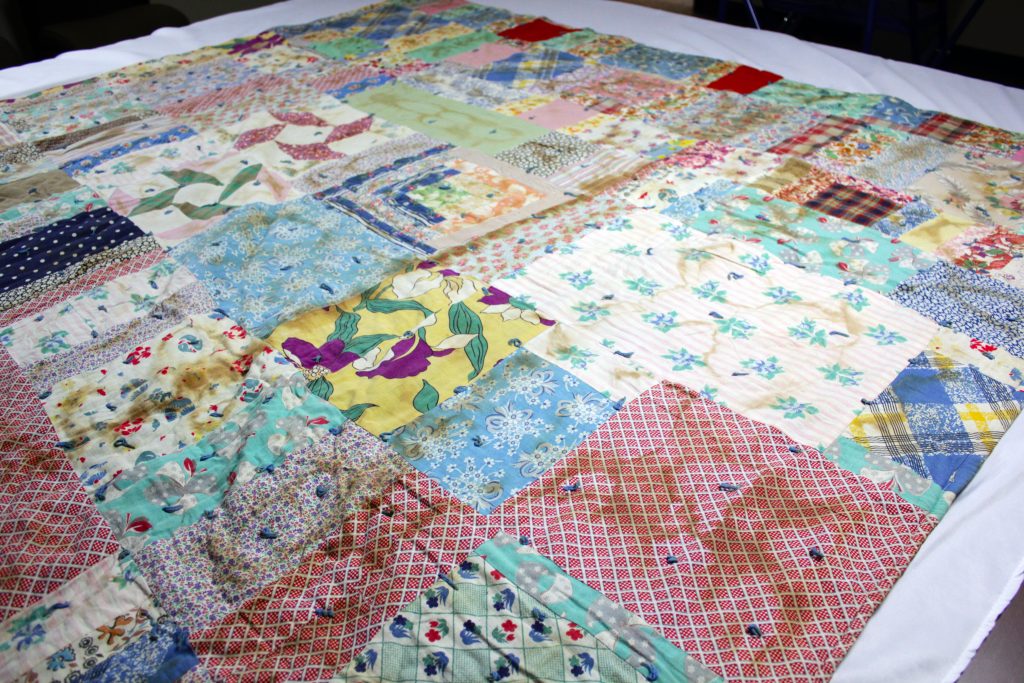Collections close-up: Two quilts from two different centuries, sharing a common thread
By Katy Little, curator of collections for the Delaware Division of Historical and Cultural Affairs
The Delaware Division of Historical and Cultural Affairs (HCA) has many quilts in its collection, each carrying a unique story of the family who used them and the women who crafted them. Quilt making is a traditional folk art with deep roots in many parts of the United Stares, and Delaware is no exception.
Quilts not only provide comfort and warmth but can be used to preserve memories and tell stories. Early American quilts, much like those created in other parts of the world, were made from a single piece of fabric with quilt stitching. This was due to the scarcity of fabrics in colonial America. Fabrics were hand woven, and often made from materials grown on the farms of those weaving the fabric.
It was not until industrialization allowed for faster textile production and store-bought fabrics that multi-colored quilts became popular.
Industrialized fabric production carried with it many negatives as well, including the expansion of cotton plantations and mass enslavement of men, women and children and the mistreatment of underpaid girls and women in textile factories.
The nature of multi-fabric quilt making lends itself to recycling and using what is left over from other textile work. In times when fabric was precious, scraps would not be wasted. Quilts could be made from old clothing as well, giving them a sentimental connection to members of the family who previously wore those garments. Fabrics used for other purposes could also be converted into materials for quilt making. Cotton flour and feed sacks are one such example and are the common thread between these two quilts in HCA’s collection. Flour and feed sacks historically made of fabric, often cotton, could be turned into towels, clothing, diapers and many other things once emptied of their goods.

Because of their secondary use as fabric, flour and feed companies used printed fabrics to encourage shoppers to patronize their product. A dress pattern may have required more than one sack worth of materials, meaning the company might just make an extra sale to ensure enough matching fabric was acquired. These companies also began to print their brand names in water-soluble ink, so that once the sack material was washed there would be no writing left, only the patterned fabric. Patterns and fliers even advertised the versatile uses of flour sacks, advertising that was largely aimed at women to encourage this trend. In the post-war 1950s, flour sack dresses continued to be regarded as fashionable.
For quilt making, both printed and unprinted flour and feed sacks could be used. Plain sacks could be used to make the backing or for small, solid color swatches. Patterned fabric could be used to make a garment, and the leftovers turned into pieces for a quilt. This resourceful recycling is commonly associated with the hard times of the Great Depression era, but the practice dates back well into the 19th century, and spans at least 100 years, as flour sacks continued to be used for materials until the fabric sacks were replaced by swap to paper sacks in the 1960s. In addition to quilts made using recycled flour sack fabric, HCA also holds a small selection of printed flour sacks in its collections.


This first quilt was made in the mid-1800s, estimated to be from between 1830 and 1860. It uses a “Puss-in-the-Corner”-style design made from several different colors of cotton fabric. It was created by Angelica Cowgill, a resident of Kent County at the time, and passed down through her family. It was donated to HCA’s care in 1993.

This second quilt was made in 1917. This patchwork quilt is made of many different colors and types of fabrics. It has two “pin wheel” squares on it. It was crafted by Orpha Houston, who lived in Georgetown, Delaware. The quilt was used by her family before being donated to HCA in 1981.
While vastly different in appearance, both quilts contain flour sack fabrics, showing the prevalence of this practice in American culture decades before the Great Depression with which it is most associated.


